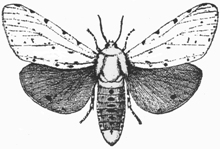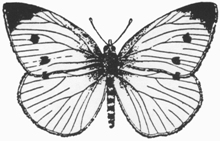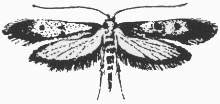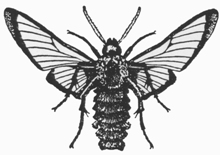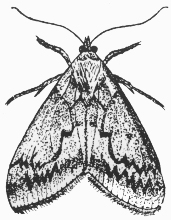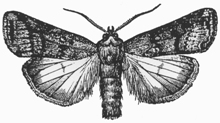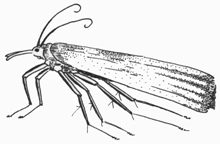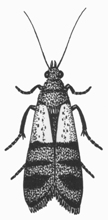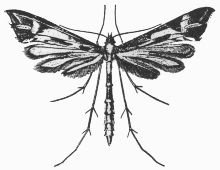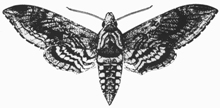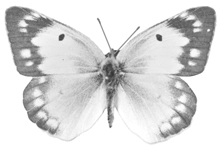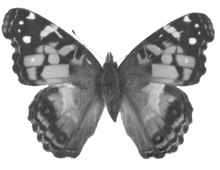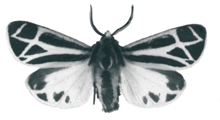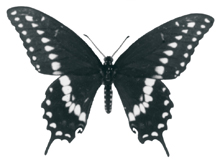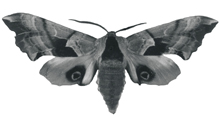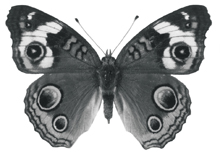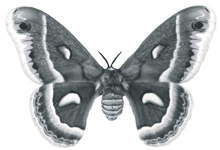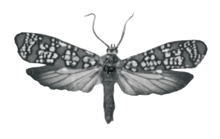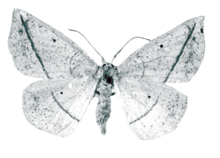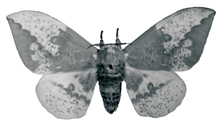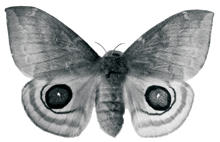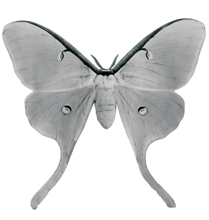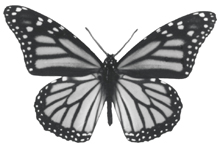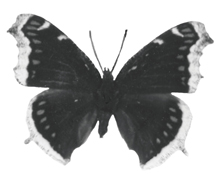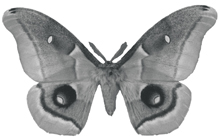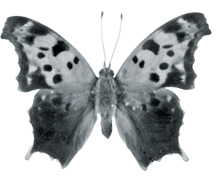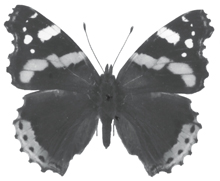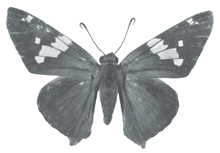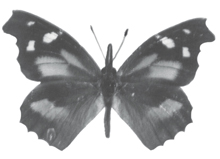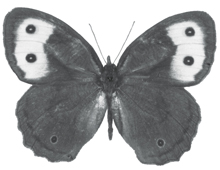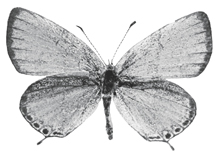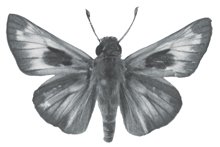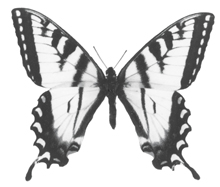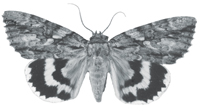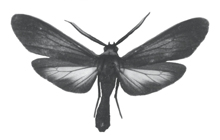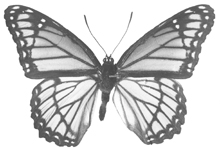| Lepidoptera - butterflies and moths | ||||||||||||||||||||||||||||||||||
|
Moths differ from butterflies in that their pupae usually are enclosed in a soft, silk-like sack called a cocoon, whereas butterflies form a hardened chrysalis to protect the pupa. Most moths hide during the daytime and become active at night, whereas butterflies fly during the day and are inactive at night. Butterflies are usually more brightly colored than moths and hold their wings upright when at rest. Their antennae are thread-like with an enlarged knob-like tip. One group of butterflies, the skippers, has the tips of their antennae bent backwards, like a cane handle. In contrast, moths are generally dull colored, hold their wings flat over the back or extend them sideways when at rest, and never have knobs at the tips of their antennae.
|
||||||||||||||||||||||||||||||||||
|
Purdue Extension Entomology, 901 West State Street, West Lafayette, IN 47907 USA, (765) 494-4554 Department of Entomology | College of Agriculture | Extension © Purdue University | An equal access/equal opportunity university | Integrity Statement | Copyright Complaints | Maintained by ENTM IT Trouble with this page? Disability-related accessibility issue? Please contact us at entmwebmaster@purdue.edu so we can help. | ||||||||||||||||||||||||||||||||||
 |
||||||||||||||||
|
| |||||||||||||||

